Report Table of Contents:
1. Introduction & Survey Highlights
2. IBM i in the Data Center (current page)
Trends for the Year
IBM i 7.5 was released in May of 2022, and adoption has grown from 19% last year to 32% in 2025. At the same time, the use of older versions is steadily decreasing. The use of 7.3 dropped from 19% to just 11%, while the use of versions 7.2 or older dropped slightly. Regarding Power servers, the use of Power10 continues to grow—increasing from 32% to 57%. Meanwhile, the use of Power9 declined slightly from 60% to 57%.
It is evident that customers are adopting recent operating system releases as quickly as they adopt IBM Power. This trend is fueled by the need to reap the benefits of the features of newer versions, to provide a secure environment to support remote operations, and to facilitate application modernization. The big change today is that moving to the cloud is more frequently considered as an alternative to purchasing new hardware.
It is also important to note that IBM i 7.2 is on extended support until April 2026, while IBM i 7.3 is on extended support until September 2026. This change, coupled with heightened concern over security, will push more and more customers to the latest supported releases of 7.4 and 7.5.
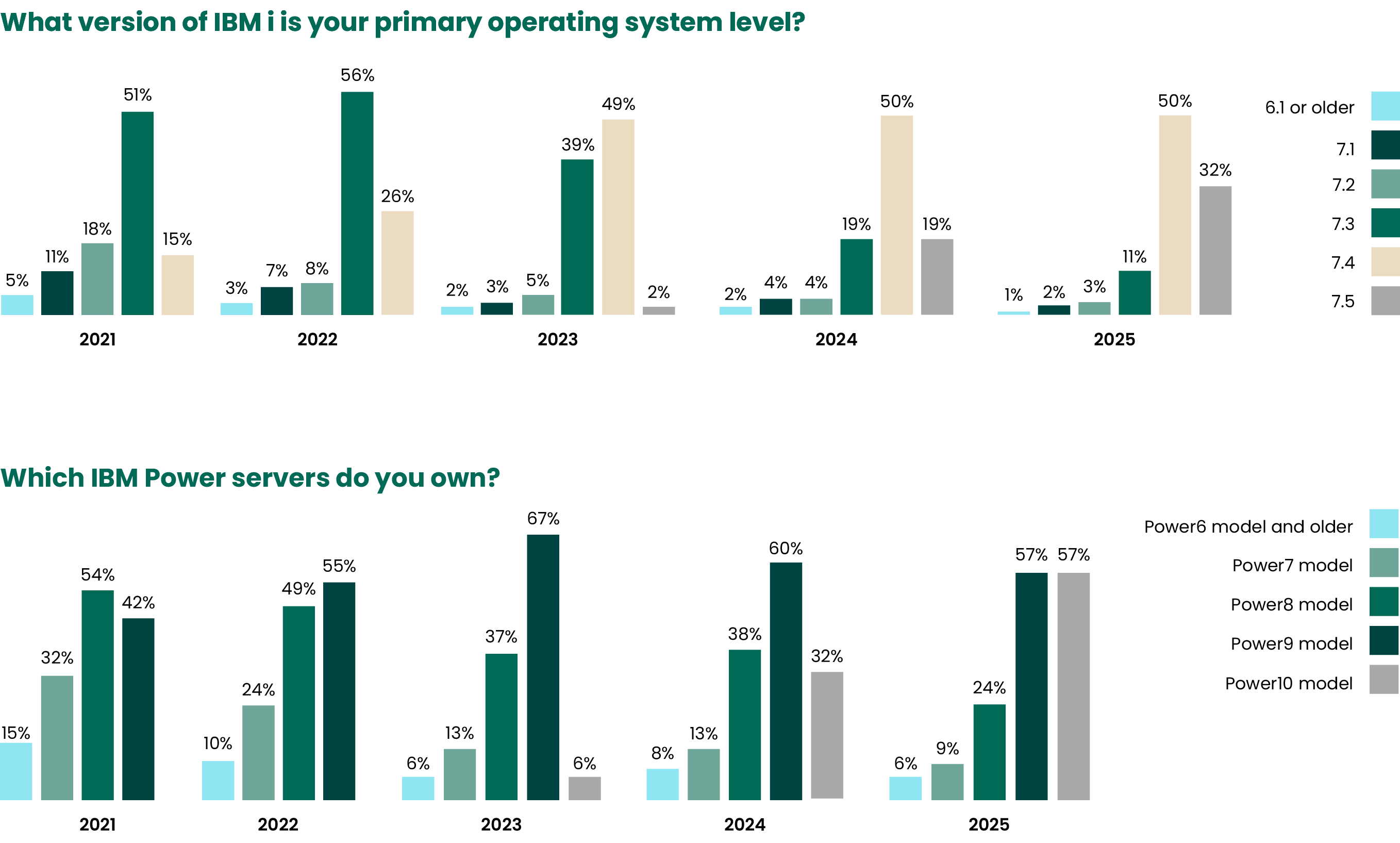
Upgrades
IBM i is an environment that provides great value to its users and one to which users show loyalty and commitment. This is reflected in this year’s upgrade trends, with 59% of respondents planning to upgrade hardware, software, or both in 2025. Most customers who plan to upgrade both hardware and software prefer to tackle both projects simultaneously. 10% of respondents plan to stay on IBM i but move to the cloud, which can serve as another means of upgrading hardware and software. We should also note that, in 2025, we expect IBM to announce a new software version and more information around a Power11 release date, so stay tuned on that!
42% of respondents have no plans for hardware or software upgrades in 2025. Most clients are on a 3-5 year refresh cycle, with hardware or software upgrades being performed individually by 29% of respondents.
This year, 57% of respondents have already migrated to Power10, which is up from 32% last year. This is no surprise, as we know customers desire the many benefits of new hardware relating to security, virtualization, high availability, and more.
IBM has released Power Enterprise Pools 2.0 with Utility Capacity, which makes use of the IBM Cloud to simplify pool administration and automation of utility capacity management, so that private cloud infrastructures have more flexibility. IBM also announced subscription pricing on all Power9 and Power10 servers, as well as IBM i 7.3, 7.4, and 7.5. This mirrors the cloud pricing structure by giving customers the freedom to choose between categorizing IBM i investments as a capital expense or operating expense. To learn more about your IBM i billing options, read this overview from IT Jungle.
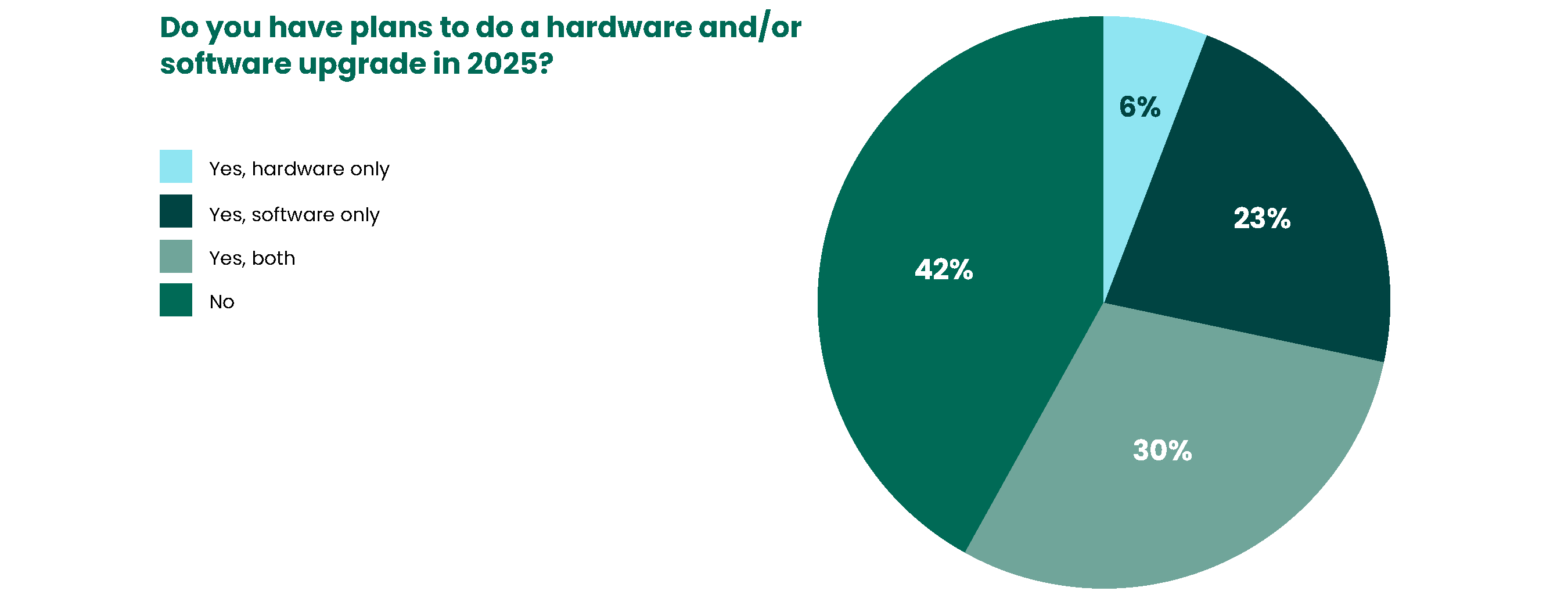
RECOMMENDATION:
For anyone that does upgrade their hardware in 2025, programs such as the IBM i Solution Edition and Capacity Backup (CBU) boxes for high availability can be a huge help, with users eligible for rebates when new hardware and software are bundled together.
Power Server Capacity
Different companies and users fill out the survey each year. Even so, when it comes to the total number of IBM Power servers organizations use, the IBM i Marketplace Survey shows impressively stable patterns year after year. Customers with two or more IBM Power servers are generally running some form of hardware- or software-based high availability.
Turning attention to the number of partitions (virtual machine technology) respondents are running, there’s a steady trend of businesses consolidating servers but increasing the number of partitions they’re running. This year, 21% of respondents are running 2-3 partitions, while those running 11-30 partitions dropped from 21% to 12%. One potential reason for the change: fewer survey responses from midsized organizations that often fall within this range of partitions.
In 2025, more than one-third of respondents run between two and six partitions. These VMs can share storage, processor and memory, and even support live partition mobility (LPM).
We expect the use of virtual machine technology to continue growing over time. This allows customers to run separate environments for development, quality assurance, high availability, Linux, and AIX alongside their IBM i production environment all in one physical IBM Power server. Because of the scale up nature of IBM i, you can add more processors, storage, and memory without increasing your power consumption.
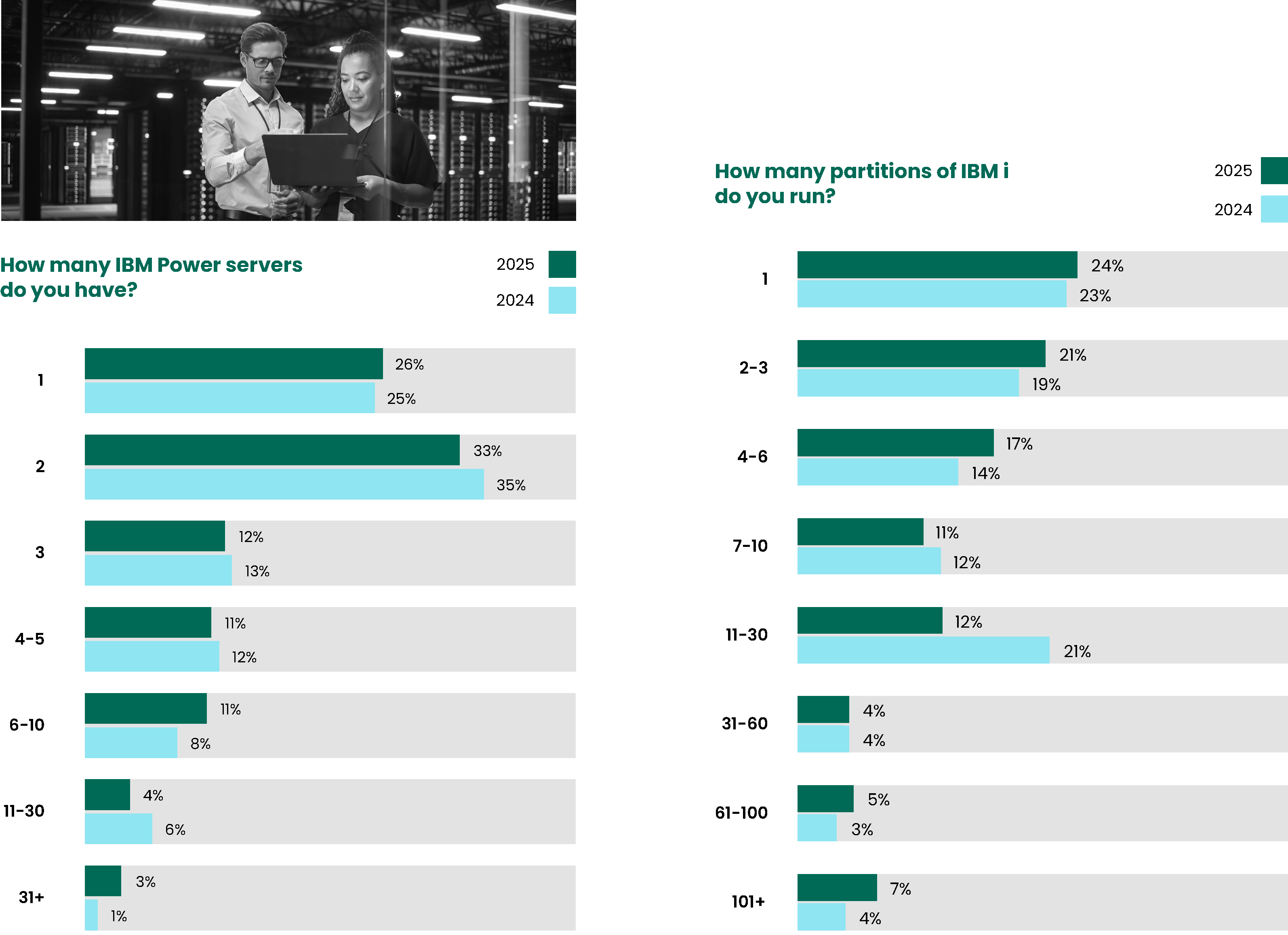
Other Operating Systems
Most companies using IBM i also run additional operating systems beside it. Windows leads, as it has in every previous year. Linux is competitive, with 52% of survey respondents using this operating system.
The percentage of customers using only IBM i to run their business has declined slightly, from 17% to 15%. These results show how common it is for IBM i to be a part of a hybrid environment where other servers for email, BI, web services, etc. are running in the cloud. Another 28% of businesses leverage AIX and other Unix-based systems for their on-premises IT environment.
It’s interesting that Linux growth hasn’t cut into Windows usage. This suggests that people could be shifting to using three operating systems in their environment. Growth in Linux could be based on new Linux workloads they are adding to their environment, while the Windows servers are staying around to assist with modernizing workloads. Instead of replacing and moving the workloads to other platforms, IT teams seem to be standing up different servers alongside Windows to eliminate the effort of moving servers where things are working properly. Often, we see IBM i serving as the centralized database server with other non-IBM i applications depending on this data via API calls.
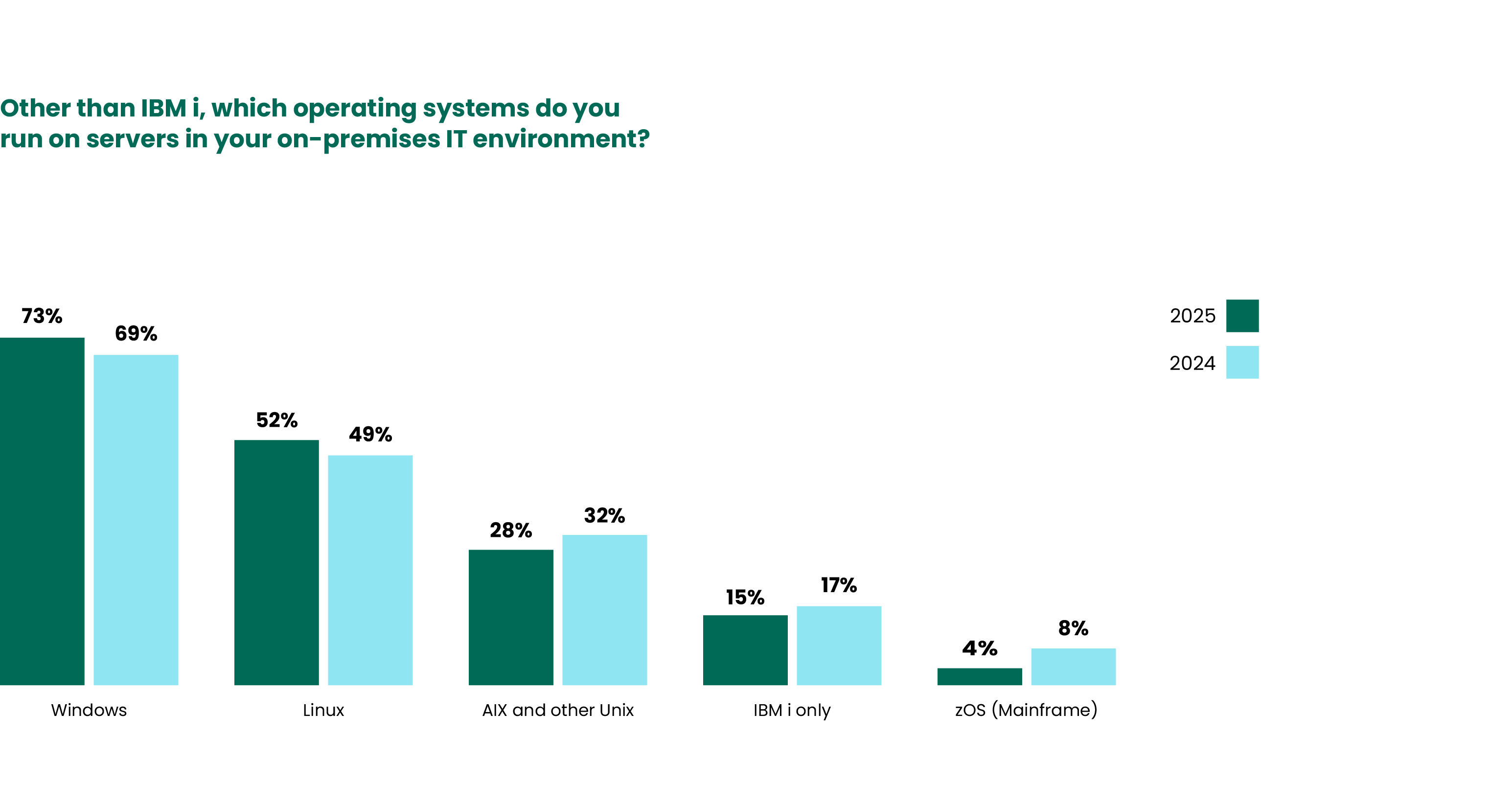
Infrastructure Location
Typically, IBM i users run most of their workloads on-premises. That’s certainly true this year, with 75% of organizations planning to run their IBM i workloads on-premises. At the same time, interest in IBM i in the cloud remains steady – and those who choose the cloud over the on-premises installations tend to run the majority of their workloads in the cloud.
The significant portion of IBM i customers in the cloud goes hand-in-hand with the continued need for modernized applications and the concern over IBM i skills. Organizations are using cloud providers to offload some of the responsibilities associated with owning and operating IBM i – such as PTF work or hardware maintenance. Others use the cloud as a means of eliminating some financial elements of owning IBM i, such as paying for future upgrades or the long-term costs of owning and operating a data center.
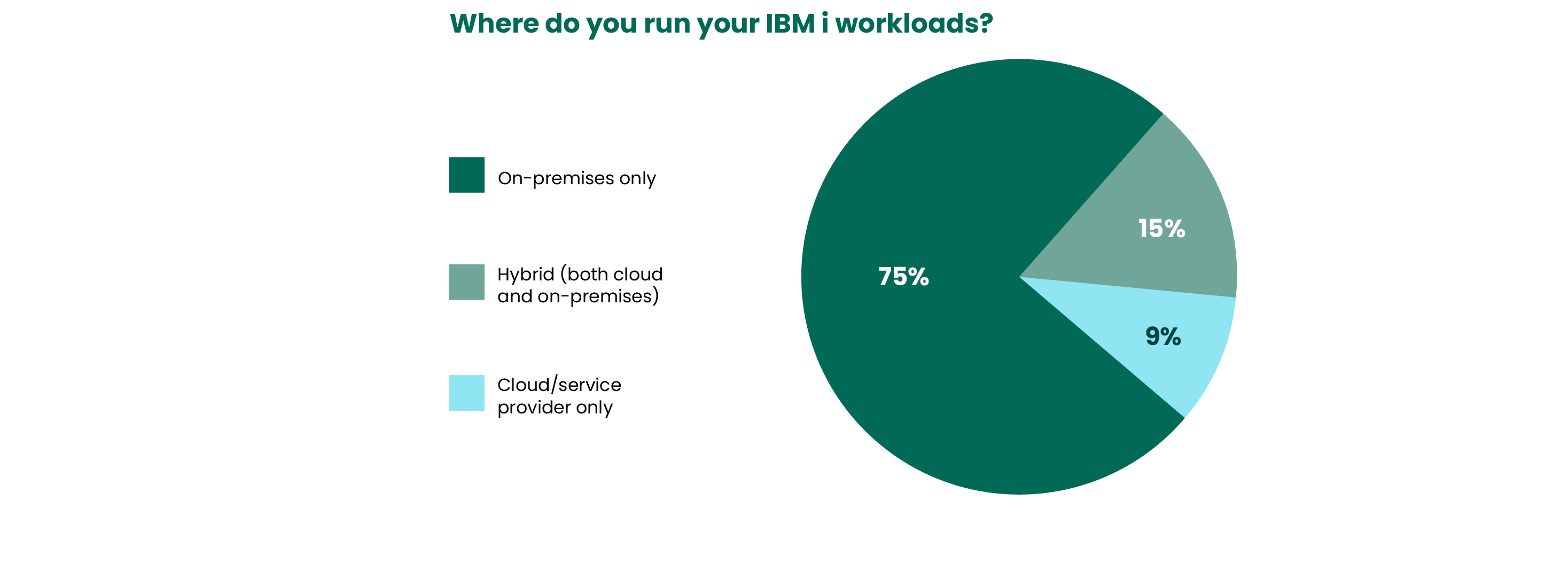
RECOMMENDATION:
Running IBM i workloads in the cloud has great benefits. If your organization is thinking about moving to the cloud, check out our guide on items to consider before making the move. To learn more about best practices for migrating and maintaining workloads in the cloud, watch this webinar to get expert advice.
Staffing
A considerable proportion of businesses (22%) continue to report employing 3-5 IBM i developers, a figure that has remained fairly stable the past 10 years. This consistency in developer numbers corresponds to the variety of languages, open source, and tools like RDi and VS Code that are used to continue furthering the core IBM i applications. It demonstrates a large commitment to modernizing the applications that service many industries. Applications written or highly modified in-house – which often constitute a large percentage of organizational applications – require ongoing modernization efforts. This means companies must keep a team that continuously optimizes for ever-changing business needs.
A key unique selling proposition of IBM i is its need for little day-to-day administration. This year, 62% of our respondents have fewer than three administrators in total for IBM i, which is consistent with previous years. 6% of respondents selected the "none" option – signifying their use of managed services to monitor their systems and keep their operating system up to date.
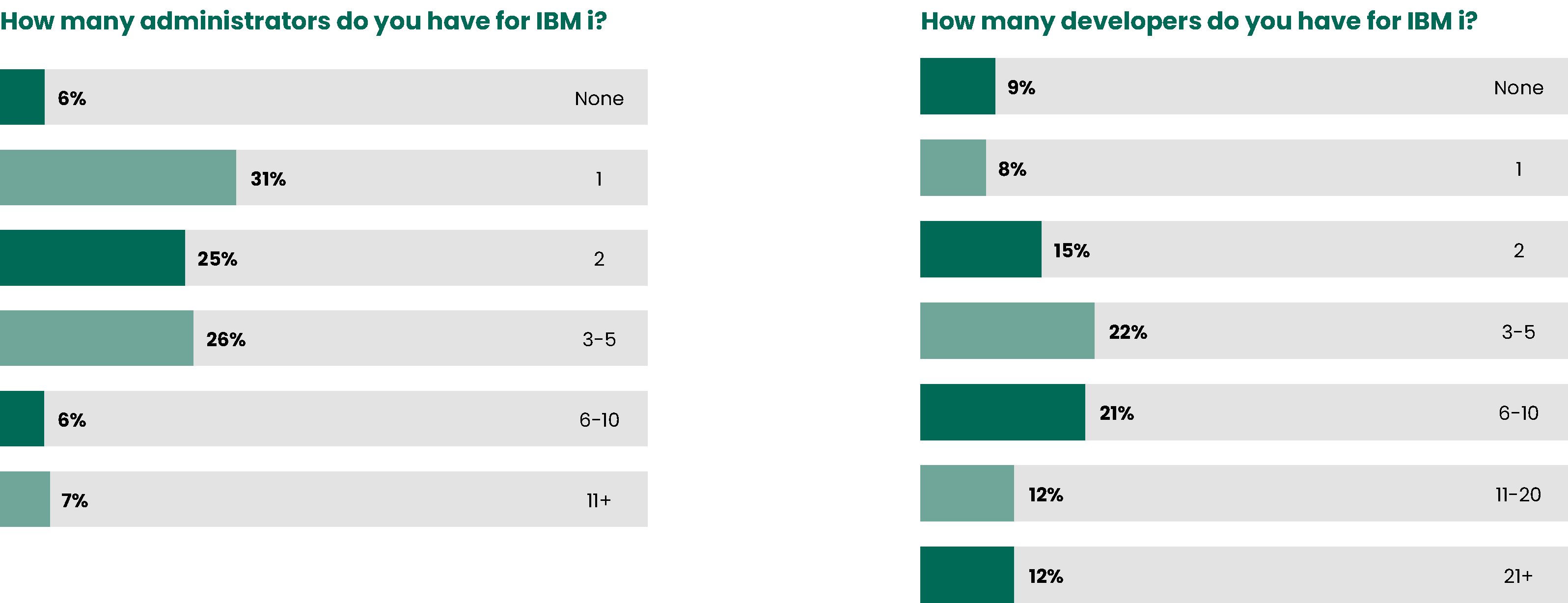
RECOMMENDATION:
Having the right expertise is a key component of any successful IBM i environment. If you feel your team is under-resourced or lacking certain skills, check out the IBM i Academy or first-class training options to fill any gaps you may have. IBM i user group like COMMON USA and Common Europe also offer educational and networking opportunities. If you are a member of COMMON, you also have access to free security and administration boot camps.
Business Applications
Homegrown applications that are written in-house remain the most commonly run applications on IBM i at 70%. Other “Write In” applications, tailored to specific business cases like medical, finance, and public administration, continue to account for more than a quarter of business applications running on IBM i. In addition, Oracle and/or Infor are used by 24% of survey respondents. Infor has had a resurgence in the market in 2024, and Oracle JDE Edwards World and EnterpriseOne customers continue to stick with IBM i despite efforts to move them to other Oracle applications.
IBM i is a highly flexible and versatile platform, as indicated by the volume of different business applications noted. With flexibility so highly valued in business, this trend is likely to continue. These unique business applications will continue to make IBM i a sticky platform. Note, however, that when writing in-house applications, it is essential to adhere to application modernization and security principles, and to make sure your developers are educated and trained on writing secure and quality applications. IBM’s efforts to help customers generate code with AI may accommodate organizations with a lack of staff and skills in these areas. This is certainly something to watch for over the next couple of years as RPG code generated with AI is perfected.
